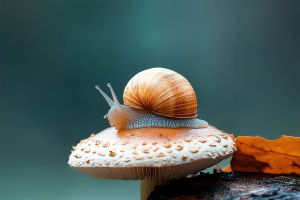Protein-Packed Beans
We've all heard that beans are a great source of protein, but is that really the case for every type of bean? With so many varieties out there, it's important for us to know which beans are high in protein and which ones are not.
Some people may mistakenly treat beans like red beans or green beans as low-calorie, protein-rich foods, but in reality, they might be loaded with starch. This can make us gain weight if we don't choose the right types.
If you're looking to lose weight, understanding the differences between beans is key to managing your diet. Let's break it down!
The Three Protein-Rich Beans
Beans come in many different forms, and it's crucial for us to distinguish between "protein beans," "starch beans," and "vegetable beans." According to nutrition expert Yan Lingxia, there are only three types of "protein beans" that truly provide a high source of protein: soybeans, black beans, and edamame (young soybeans). These fall under the category of "legumes," which also includes other foods like fish, meat, and eggs in the protein group.
The Difference Between Soybeans, Black Beans, and Edamame
Soybeans, black beans, and edamame might all belong to the same family, but they differ in their nutritional content. The main differences lie in the maturity and the type of soybean.
Edamame is harvested when the beans are still green, about 80% mature, and the pods are still soft. As edamame matures, it turns into either yellow soybeans (yellow beans) or black soybeans, depending on the variety. So yes, it's true that edamame is just a younger version of yellow or black beans.
Plant-Based Proteins for Lowering Cholesterol and Managing Health
Soybeans, black beans, and edamame are all rich in protein and serve as major sources of plant-based protein. Unlike animal proteins from meat, which are often higher in lipids and cholesterol, plant-based proteins contain fiber that helps with digestion, reduces lipids , and can protect our cardiovascular system.
For those of us looking to manage blood pressure, cholesterol, or diabetes, choosing plant-based protein over animal protein is an excellent option for heart health.
What About Women's Health and Hormonal Balance?
Beans, especially soybeans, contain isoflavones, which are plant compounds that have estrogen-like effects. These compounds can help balance hormones and relieve symptoms such as hot flashes and night sweats for women going through menopause.
However, if you have a history of gynecological cancer, it's important to consult with a doctor before including large amounts of soybeans in your diet, as the phytoestrogens may interact with treatment medications. Moderation is key.
How Much Protein Should We Be Getting from Beans?
While plant-based proteins from soybeans and black beans are great, we need to calculate how much protein we're consuming from them. Nutritionist Yan Lingxia advises that we should consume about 1 gram of protein per kilogram of body weight daily.
For example, a 60 kg (132 lbs) mature male should aim for 60 grams of protein per day. Soy milk and beans can help us reach that target, but it's essential to balance them with other protein-rich foods.
For example, one serving of soy milk (190 ml) contains about 7 grams of protein. One serving of 20 grams of yellow soybeans, 25 grams of black beans, or 50 grams of edamame also provides a similar amount of protein. This makes it easy to incorporate these into our daily meals to meet our protein goals.
Comparing the Top Protein Beans
Now, let's compare the three main protein beans:
• Black Beans: Rich in protein and also packed with anthocyanins, which are antioxidants. Black beans are not only high in protein but also contain vitamins, minerals, and dietary fiber. The anthocyanins found in black beans help fight inflammation and protect against oxidative stress.
• Yellow Soybeans: These contain the highest amount of protein among beans, as well as calcium and vitamin E, which is another powerful antioxidant. Consuming yellow soybeans can help protect against heart disease by reducing cholesterol levels due to the presence of unsaturated lipids.
• Edamame: Edamame has slightly less protein than yellow or black beans but is a great low-calorie option. Edamame is also a source of potassium, phosphorus, and vitamin C, making it an excellent choice for boosting immunity and managing weight. However, be cautious with pre-packaged edamame, as they are often seasoned with oil and salt, which can increase their lipids and sodium content.
Conclusion: Which Beans Are Best for Us?
When it comes to losing weight or maintaining a healthy lifestyle, we should focus on consuming protein-rich beans like soybeans, black beans, and edamame. While other beans like red beans or green beans might be delicious, they are not as protein-dense and often contain more starch, which can hinder weight loss. As Lykkers, we need to make sure we're choosing the right type of beans to fit our dietary goals.
Are you ready to switch up your bean choices for better health and weight management?


